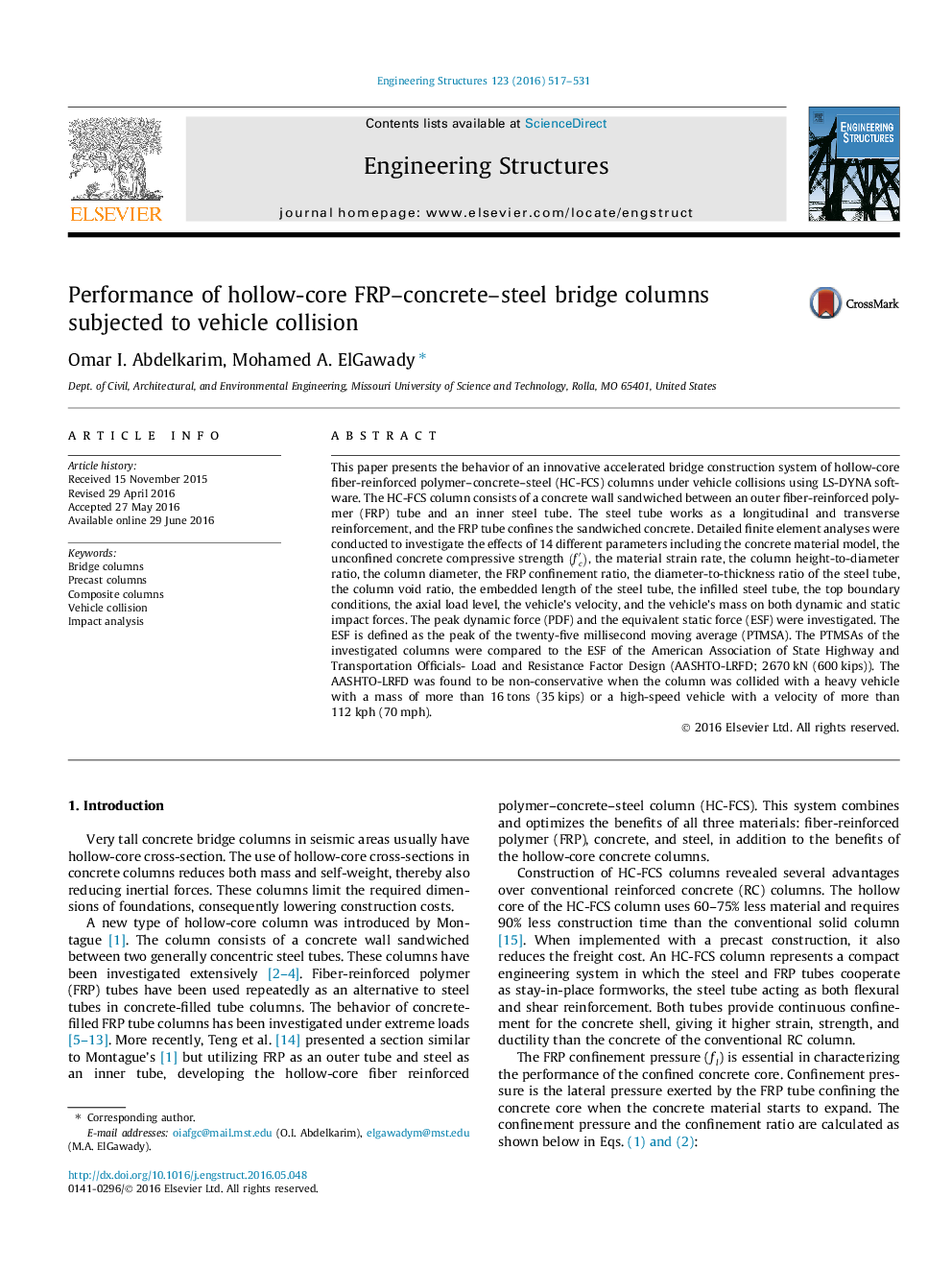| کد مقاله | کد نشریه | سال انتشار | مقاله انگلیسی | نسخه تمام متن |
|---|---|---|---|---|
| 265701 | 504323 | 2016 | 15 صفحه PDF | دانلود رایگان |

• The effects of 14 parameters on the behavior of HC-FCS columns were investigated.
• The main resistance of the HC-FCS columns came from the inner steel tube.
• The AASHTO-LRFD was found non-conservative in the cases of the high speed and mass.
• The HC-FCS column dissipated high energy when it was collided by a vehicle.
• The outer FRP tube saves the concrete core from spalling.
This paper presents the behavior of an innovative accelerated bridge construction system of hollow-core fiber-reinforced polymer–concrete–steel (HC-FCS) columns under vehicle collisions using LS-DYNA software. The HC-FCS column consists of a concrete wall sandwiched between an outer fiber-reinforced polymer (FRP) tube and an inner steel tube. The steel tube works as a longitudinal and transverse reinforcement, and the FRP tube confines the sandwiched concrete. Detailed finite element analyses were conducted to investigate the effects of 14 different parameters including the concrete material model, the unconfined concrete compressive strength fc′, the material strain rate, the column height-to-diameter ratio, the column diameter, the FRP confinement ratio, the diameter-to-thickness ratio of the steel tube, the column void ratio, the embedded length of the steel tube, the infilled steel tube, the top boundary conditions, the axial load level, the vehicle’s velocity, and the vehicle’s mass on both dynamic and static impact forces. The peak dynamic force (PDF) and the equivalent static force (ESF) were investigated. The ESF is defined as the peak of the twenty-five millisecond moving average (PTMSA). The PTMSAs of the investigated columns were compared to the ESF of the American Association of State Highway and Transportation Officials- Load and Resistance Factor Design (AASHTO-LRFD; 2670 kN (600 kips)). The AASHTO-LRFD was found to be non-conservative when the column was collided with a heavy vehicle with a mass of more than 16 tons (35 kips) or a high-speed vehicle with a velocity of more than 112 kph (70 mph).
Journal: Engineering Structures - Volume 123, 15 September 2016, Pages 517–531